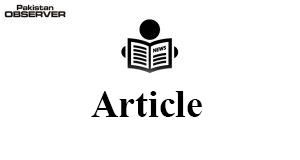Dr M Athar Khan
MADRASSAH as said earlier elsewhere in this
series of articles is both an abstract and a physi
cal concept, which idealizes its various aspects in the Islamic and the Qur’anic contexts. At first place then the institution of Madrassah is not conceived in reference to a place such as an educational building or any other place especially structured and formally designated for the purpose of organizing teaching. Concept of place as it relates to Madrassah is based on facts and events that led to learning and organizing teaching in early period of Islam in places each of which had its own educational significance in general. As it relates to the institution of Madrassah in the modern times each of the places which had ever been used in the early days of Islam for purpose of teaching and learning has its own value even for the present times and even so for education in Pakistan.
Situated in desert and among Rocky Mountains, Hira cave is one of the holy places, which is revered by Muslims for its association with the Holy Prophet (SAW) because, he used to spend there his pre-enunciation days, in worship and contemplation. Deserts and Rocky Mountains have atmospheric climate and conditions which have their own effects on their dwellers. Location and natural atmosphere of cave Hira is more suited for the development of the higher levels of human traits and capabilities through contemplation and meditation.
Historical monuments and remains of ancient religious educational institutions and monasteries provide evidence to the fact that top of hills, mounds, and places rising above the ground level were particularly chosen for purposes of education, meditation and worship. All these involve high level of physical, mental and spiritual functions which are essential for all higher level educational achievements. Founders and proponents of new schools of thought in philosophy and psychology of education appear to be inclined more to emphasizing the educational values of meditation and contemplation that have long been despised as religious. Dar-e-Arqam is known as the first school where the Muslim converts gathered to learn Qur’an and basics of Islam from the Holy Prophet (SAW). Dar-e-Arqam provided for safety and seclusion for preparing great personalities for propagation and spread of Islam
Dar-e-Arqam as a home-based school is characteristic of features which include mission, value of teacher, peace and security at place of learning, which the modern education institution publicize as their distinguishing features. Dar-e-Arqam with its simplicity and scarcity of resources provides for an excellent model of educational institution for all times. Khabbab Ibn al Aratt teaching sister and brother-in-law of Hazrat Umar Qur’an at their home is an example of home tutoring under special conditions. Mosque as an educational institution has significant role in the education of children and adults both. The elements of sanctity and holiness of the mosque are the very natural means of disciplining people and developing in them habits and traits of Momineen which is the sole objectives of education in Islam.
Preschool education at teacher’s home provided a natural intermediary to the shift from home to school environment. A home environment, be it the one of the child’s own, or someone else’s, still has several elements of familiar home atmosphere, Since the child does not have to go away from home to a new place, and meet unfamiliar people, in a formally structured school setting, the home school presents little or no peer relationship and adjustment problems for the child as he or she is already familiar with them. Great Muslim teachers and scholars of their times, used their homes for teaching higher level and specialized academic and professional subjects and disciplines.
Originally a thatched roof structure of date leaves, built in the north of the four walls of the Masjid-e-Nabavi Suffah, is symbolic of a fully fledged residential-cum-day education institution. With its added features of religiosity and sanctity of Ilm, Suffah for all times presents a model of Islamic Institution of education. ‘The open place teaching denotes any place or occasion, which could be used for imparting or acquiring Ilm or for teaching and learning particular things.
While the use of places like the ones described before continued to be used for the purposes of education in the world of Islam, education was more formally organized in especially built Makatib, elementary schools and various types of institutions of higher learning. Book shops, literary societies and libraries were also used for educational purposes. Although, no more information, except that the Madaris built in early period of Islam provided for teaching and residences of the teachers and the students, is available, the Hadith, “Momin’s wealth spent on construction is sheer wastage and brings in no benefits” (quoted by Ibn Saad in Tabaqat) provides ground to believe that design and structure of buildings of Madaris would have been simple, indigenously structured, based on the needs of the students and the teachers, and suited to the socio-cultural and geographic conditions of their locations. In 1980 I had visited UNESCO, Paris in connection with developing for M.A. (EPM) program of AIOU, a course on educational facilities. I had found that UNESCO had developed proposal for building educational facilities for developing countries exactly on the same lines.
—The writer is Prof & Advisor to the VC, Sarhad University, Peshawar.







